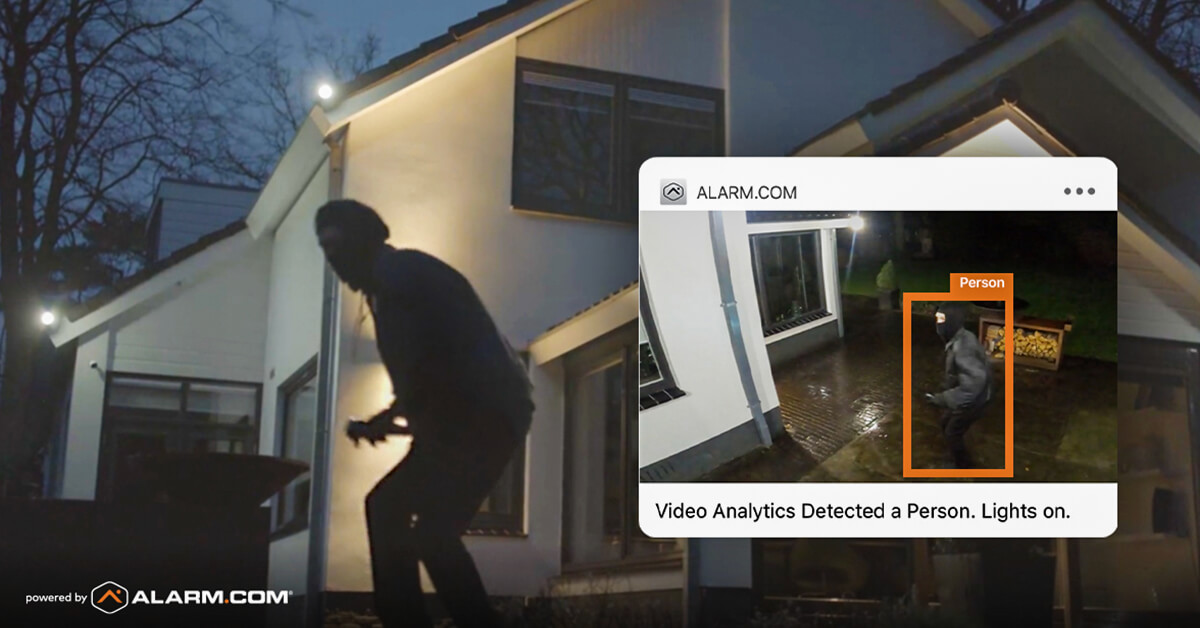Considering the purchase of a home burglar alarm system? You have two options. DYI or professionally installed. Either way you must know how burglars break in, for you to know where to install the proper protection to safeguard your home. So here is the story to help.
The average burglar is a 16 to 25-year-old male that lives within a 5-block radius of your house. They look for the easiest way to enter the home without being detected.
Years ago, before the invention of the Ring doorbell, entry was done mostly through the main doors of the house. Since the Ring doorbell and Wi-Fi camera explosion, they now enter through both doors and windows equally. Even breaching second floor windows as well!
Once the burglar is in, they will run to the master bedroom. In my 40 years’ experience I have NEVER seen a burglary where they didn’t hit the master bedroom. Most American’s leave their cash, jewelry, credit cards, and checks in their master bedrooms. The burglar grabs a pillowcase, throws your valuables in it, and leaves your home within 2 to 15 minutes, on average. This is not to say there aren’t professional burglars that come from other areas, but either way, they all go to the master bedroom.
So how do you design the proper home security system? There are several layers of protection to consider. The first question you must ask yourself is “Will you be arming the alarm system only when you’re not home or will you also arm it when you’re home at night?” If only using it when everyone is out of the house, then you might consider only doing a basic system. This would consist of all the perimeter doors and utilizing motion detectors to cover if they break in from an unprotected window. The motion detectors can be strategically placed so they would pick up the burglar on his/her way to the master bedroom.
If you want to arm the alarm system when you are home and or when you go to bed, a basic system of just doors and motion detectors wouldn’t be the proper choice. This is because when you set the alarm at night you will not want to make yourself, and the occupants of the home, prisoners in their rooms with motion detectors armed in the hallways and no one can walk about. Arming only the doors at night isn’t an effective strategy. So now you must add to your security system with window protection. This is the next layer.
There are typically two types of windows in a home. Double hung windows (they move up and down) and crank out style windows that crank out and when closed, and latch down. They should be protected differently.
The first line of defense with a double hung window would be to place a contact & magnet on the window, so if the window was to be opened, then the alarm would go off. With wireless contacts this is easily done by installing the contact by the lock and the magnet next to it on the opposite window. This way when the window is opened from the bottom or top, the alarm system will detect the movement as the magnet moves away from the contact portion and triggers the alarm. But suppose the window is locked and they break the glass? A contact and magnet will not detect the glass breaking and if the burglar doesn’t then reach in and open the window, your contact/magnet setup is useless. So, the next line of protection for a double hung window would be a glass break detector. This type of protection will trigger once the burglar breaks the glass and they will not be able to enter your home without being detected.
If you have crank out style windows, then you have a more secure window then a double hung. When crank out windows are secured you latch them down. Most likely the burglar will have to break the glass to enter. The first line of defense for a crank out style window would be a glass break detector and a contact/magnet would be second. Quite the opposite of the double hung window. I’ve seen to many times where a customer had a contact installed on the crank out style window and no glass breaks. Not good.
As you can see there is a lot of thought that needs to go into the protection of your home. We haven’t even discussed fire (do you have pets?), water detection, video doorbells, cameras, or thermostats! I would highly recommend a free home assessment, even if you decided to do DYI. At least a professional can lay out the proper protection. After all this is for the safety of your home & family! You can’t put a price on that.
Mike the Alarm Guy
